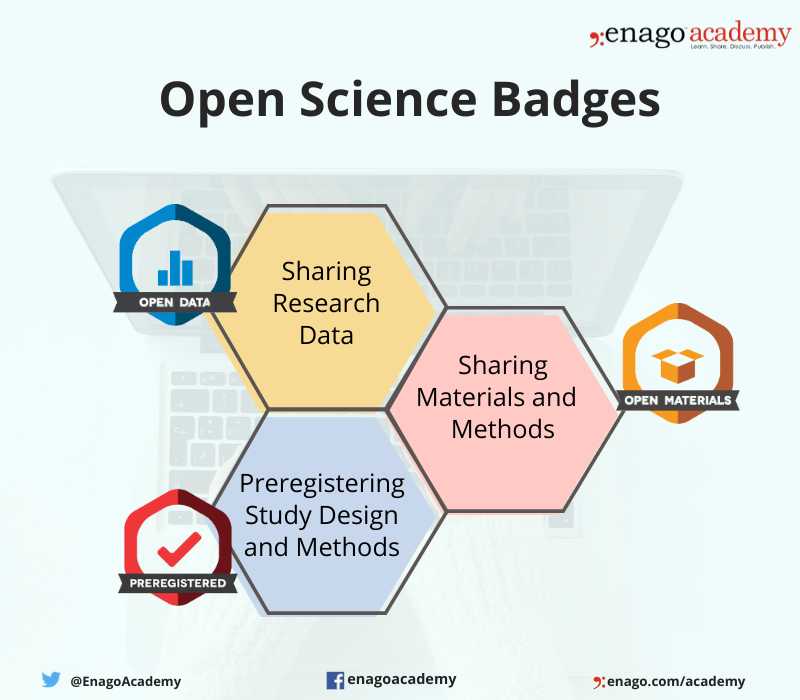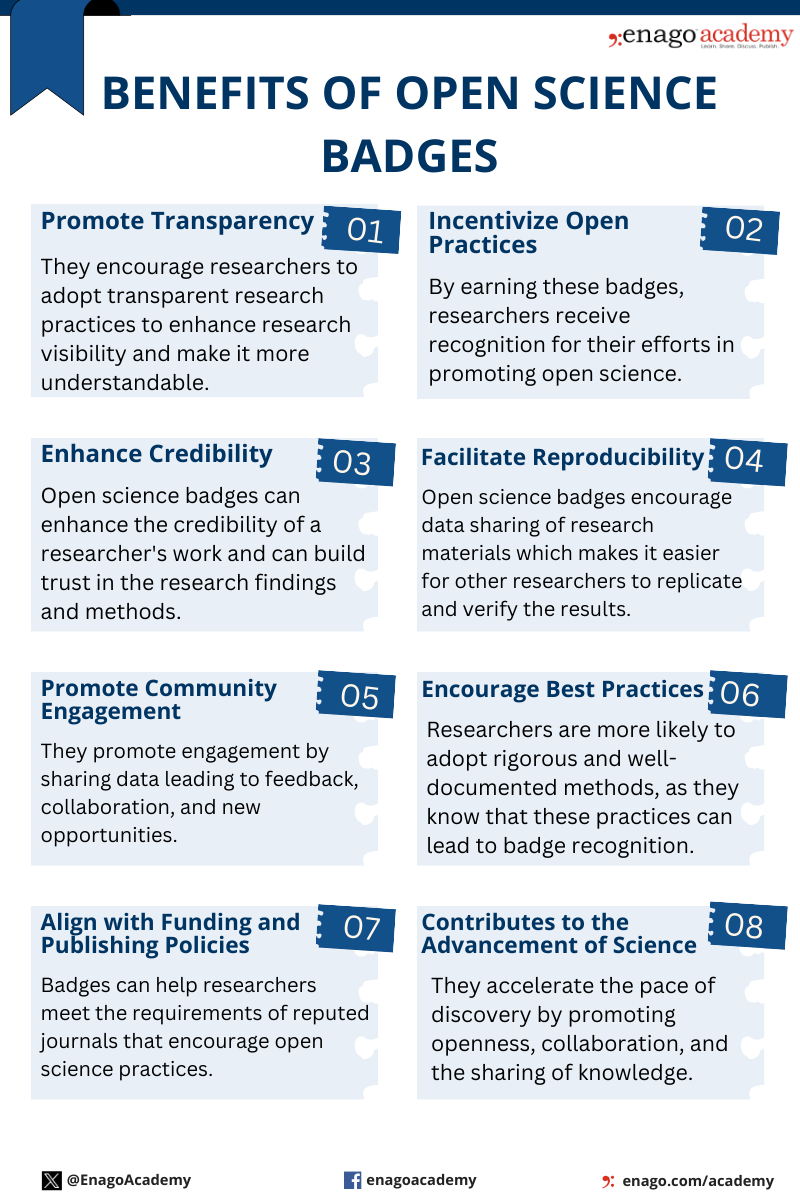Open Science Badges: A novel approach to promoting transparent research data sharing

The changing dynamics of the open science movement is powered by several initiatives. At the heart of this movement lies a novel and innovative system of recognition — open science badges. These badges, akin to the honors and distinctions of academia, serve as visible symbols of a researcher’s unwavering commitment to open science principles.
What Are Open Science Badges?
Open science badges are a way to recognize transparent and open research practices within the scientific community. They are an important development in the world of scientific research. They are visual symbols or labels that researchers can earn and display on their publications or research outputs to demonstrate their commitment to open and reproducible science. Furthermore, these badges help promote the principles of open science, which include transparency, data sharing, and methodological rigor.
The open science badges were initiated by Centre for Open Science to incentivize and reward open science practices. They recognize researchers who engage in these practices. Moreover, these badges help researchers to pre-register their research, where researchers document and publicly share the details of their research plan before conducting the study.
 Types of Badges and Criteria to Apply for Them
Types of Badges and Criteria to Apply for Them
There are several types of open science badges, each representing different aspects of open and reproducible research. The major three types of open science badges include:
 1. Open Data Badge
1. Open Data Badge
Open data badges are given to researchers making their research data openly available. Therefore, this allows others to access and use it for validation or further analysis.
Criteria:
- The shared data must be available and accessible to the public on an open access repository
- Additionally, the data should have a persistent identifier. It must be provided in a format that is time-stamped, immutable, and permanent.
- To facilitate the replication of the reported analyses and results by independent researchers, a data dictionary, such as a codebook or metadata, must be included.
- The eligibility for the open data badge would not be affected by the exclusion of any unnecessary data that is not required to reproduce the reported results.
- An open license should be applied to the data, allowing others to copy, distribute, and make use of the data. Also, the licensor should retain credit and copyright as applicable.
2. Open Materials Badge
It signifies that the researcher has shared the materials and methods used in their study (e.g., questionnaires, software code, etc.). This makes it easier for others to replicate the experiment.
Criteria:
- The components of the research methodology should be available for public access to enable the reproduction of their reported procedure and analysis.
- The materials have a persistent identifier and be stored in a format that is time-stamped, immutable, and permanent.
- Moreover, the components of the methodology which cannot be shared digitally, must be described in enough detail so that an independent researcher can understand how to replicate the research procedure.
- The materials provided should be accompanied by a sufficient explanation that allows an independent researcher to comprehend how these materials are related to the reported research methodology.
3. Preregistration Badge
It is earnt by researchers on preregistration of their study design, methods, and analysis plan before conducting the research. Additionally, preregistration helps to prevent “p-hacking” and selective reporting of results.
Criteria:
- A public date-time stamped registration is required in an institutional registration system.
- The actual intervention or data collection should be proceeded after the registration.
- Also, the preregistered design should describe the research design, study materials, research question, outcome variables, and predictor variables (including controls, covariates, and independent variables).
- The results should be fully disclosed in accordance with the registered plan.
- Furthermore, if changes or any additional analyses are made to the preregistered design, they must be explained and distinguished from the preregistered ones.
Why Are Open Badges Important?
Open science badges can accelerate the open science movement by encouraging the researchers to adopt the principles that promotes these practices. Open science badges have several features which offer benefits to both researchers and the broader scientific community. These benefits include:

As open science continues to gain momentum, these badges play a crucial role in advancing the goals of transparency and reproducibility in research.
Open science badges are a positive development in scientific publishing. They encourage researchers to adopt open science practices, making research more transparent and reliable. These badges not only serve as incentives for researchers but also signal to readers that the research content is accessible and trustworthy. The widespread adoption of these badges by journals is a testament to the increasing importance of open science in the research community. However, open science badges are not advisable in certain areas of research that demand confidentiality. Researchers must know to strike a balance between ethical consideration and data privacy and advocating open science.









